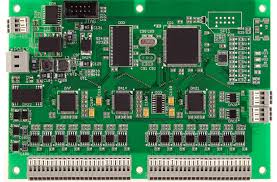PCB prototype is a crucial step in the progress of printed circuit boards, as it contributes to all kinds of benefits which would ultimately increase the success rate of any electronic device project. In this write up, we will explain in detail why choosing for Prototype PCBs is an essential decision for those are professionals designers or engineers.
Detection du Flaw de Conception en Début de Cycle
Prototyping a PCB board will allow the engineers to find and correct design flaws at the early stage of development. According to statistics, addressing a single design flaw after production can be as much as 10 times more expensive than if it was corrected at the prototyping stage. This will allow you to identify and fix issues such as short circuits, trace width too small, or incorrect component placement, all deadly in the wrong scenario and early on, for a fraction of the cost associated with full blown production errors using prototype PCBs.
Improving The Functionality And User Experience
This will allow you to test the functionality of the PCB in practice using prototypes. The only way to test a board under real-world conditions is in a hands-on testing phase. It enables engineers to validate the electrical, thermal, and mechanical properties to certify that the ultimate product will meet the properties needed for operation. Also, the PCB can be tested for how it interacts with other system components, which is necessary for systems having integration.nextLine — Usability Test of PCB
Cost-Effectiveness
While one of the most common excuses for avoiding the added cost of prototype PCBs is to save money in the long run, it so often ends up being a missed opportunity for savings in the long term. Prototyping allows the companies to invest in a prototype and reduce the costs associated with large-scale production errors. This pro-active approach not only saves money but reduces time-to-market as less iteration rounds are required pre-production.

Supports Iterative Development
Today, an iterative process is what modern engineering projects is all about. Expand Iteration Cycles: Prototyping PCB or prototype PCBs Enable you to quickly refine your designs over multiple iterations. This iterative process allows manufacturing issues to be eliminated by measuring and correcting in real testing data, improving the quality and performance of a PCB. The approach helps engineers to explore new configurations and unique features for designs, without the potential exposure to costly failures in the final product.
Community / Stakeholder Engagement & Feedback
A working prototype pcb can easily help in appealing for the approval and funding from the stakeholders. To be able to show the product concept in a real form, the prototypes can come in handy for any presentations and meetings. They give the stakeholders a chance to understand whether the product is viable or not, to give feedback or make a decision based on feedback, to invest more money, or not.
Speeds up the Certification Process
Most electronics products are required to have certifications from regulatory bodies before they can be sold. It also smooths the certification process since with a prototype there is a tangible product that can be tested against real industry standards. It is especially important in sectors such as medical devices, automotive electronics, and aerospace where must follow stringent regulations.
Conclusion
Going for prototype PCBs is not some random decision, but a part of a bigger strategic decision to improve the reliability, functionality, and market readiness of the product. More importantly, the time, savings and the risk and path to successful product launches are massive considering the investment in prototyping. Prototyping plays a critical role in the development process, ultimately driving better and more competitive products, which is something that any designer or engineer must apply.
